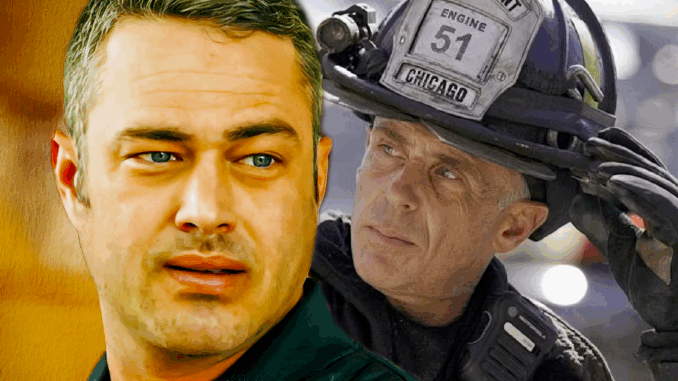
For over a decade, Chicago Fire has been more than just a high-octane drama about blazes, rescues, and near-death calls. It has been, at its core, the story of the people inside Firehouse 51 — the bonds forged in heat and smoke, the quiet moments of camaraderie in the kitchen, the devastating losses that leave lasting scars.
But as the series moves deep into its fourteenth season, a truth has become impossible to ignore: Chicago Fire is no longer the same show it once was. And here’s the surprising part — that may be exactly the point.
The Day the Firehouse Changed
For fans, the departures of foundational characters like Captain Matt Casey (Jesse Spencer), Lieutenant Kelly Severide (Taylor Kinney), and Lieutenant Stella Kidd (Miranda Rae Mayo) hit like a sucker punch. These weren’t just familiar faces — they were the moral center, the pulse, and, at times, the very heartbeat of the narrative.
When Casey left for Portland in Season 10, the show lost its steady hand and moral compass. Severide’s brooding intensity, often the perfect foil to Casey’s calm authority, became an intermittent presence as Taylor Kinney stepped back for personal reasons. Stella Kidd, once the embodiment of grit and fearless leadership, exited for her own arc-related reasons this season.
Individually, these absences hurt. Together, they reshaped the very DNA of Firehouse 51.
A Risky Kind of Reinvention
Instead of scrambling to plug the holes with high-profile replacements, Chicago Fire did something radical: it leaned into the emptiness. The writers allowed the absence to be felt. They didn’t write away the grief or pretend nothing had changed.
Joe Cruz found himself balancing more responsibility than he ever expected, struggling to live up to legacies he didn’t ask to inherit. Darren Ritter stepped into leadership moments with hesitation, testing the boundaries of his own self-confidence. Violet Mikami began redefining herself in the wake of heartbreak, becoming a more complex and resilient presence in the field.
The firehouse now feels like a real workplace in transition — imperfect, occasionally unstable, yet still united by shared purpose.
The Fan Divide
As with any bold creative shift, reactions have been mixed.
Some viewers have voiced frustration over Severide’s prolonged absence, feeling his occasional appearances only serve as reminders of what’s missing. Others see Casey’s brief returns as bittersweet — welcome but painful. Yet a growing segment of the audience appreciates the new direction, praising the realism in showing how a tight-knit team copes with long-term change.
Social media reflects this split vividly. Reddit threads dissect the firehouse’s shifting power dynamics. Twitter debates rage over whether the show needs a “core four” again or if it’s better off as an ensemble without clear hierarchy. The one thing both sides agree on? They still care enough to argue.
The Realism Behind the Risk
In real life, firehouses — like any workplace — evolve. People transfer. Leaders retire. Friends move on. That Chicago Fire is willing to let its fictional firehouse mirror that reality may be its boldest move yet.
Rather than force-feed nostalgia, the series is exploring leadership as something fluid, not fixed. There’s no single hero to center every story. Instead, the baton passes week to week, giving space for supporting players to grow into leading roles — or fail and learn from it.
It’s a gamble, to be sure. But it’s also the kind of narrative risk that can keep a long-running series alive.
The Road Ahead
Rumors swirl that Taylor Kinney could make a full return as Severide, and Jesse Spencer’s sporadic cameos suggest Casey’s connection to 51 is far from over. But what’s notable is how little the show seems to be waiting for them.
If they come back, the firehouse will welcome them. If they don’t, the firehouse will adapt — just as it always has.
Season 14 has made it clear: Chicago Fire isn’t about preserving the past at all costs. It’s about showing how teams survive, and even thrive, when their legends leave.
Still Burning Bright
The familiar red trucks still roar out of the station. The calls still come in at all hours. The firehouse walls remain the same. But inside, everything is shifting.
And maybe — just maybe — that’s the most authentic thing Chicago Fire has ever done.
